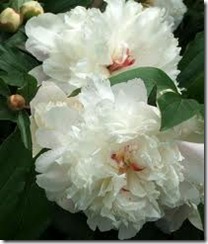Peonies are perennial herbaceous plants or shrubs that produce showy blossoms in shades of red, yellow, purple, pink and cream, among other colors. They vary in size and flower type depending on the cultivar. Peonies need a period of winter dormancy to flower and grow best in cold climates. Several fungi infect peonies.
Verticillium Wilt
-
The Verticillium albo-atrum fungus causes verticillium wilt in peonies. This fungus lives in the soil and attacks peony roots. It clogs the water-transport system, causing yellowed plants and wilted shoots. The tissue inside the stems turns brown, and the plant eventually dies. Fungicides are generally ineffective against this fungus. Remove and destroy infected plants. Replace diseased plants with peony cultivars or other species that are not susceptible to verticillium wilt infections.
Botrytis Blight
-
The Botrytis cinerea fungus that causes botrytis blight usually attacks peonies in the spring. This disease can be particularly severe when the weather is rainy and overcast for extended periods. The buds discolor and rot, and a gray mold grows over the affected areas. Dark brown, leathery spots form on the leaves, and the young stalks wilt and collapse. The fungus lives in the soil and spreads through splashing water. Mancozeb or copper sulfate can help protect young plants, but fungicides are ineffective once the disease is established.
Powdery Mildew
-
A number of plant-specific fungi cause powdery mildew infections. Dusty white patches form on peony leaves. Brownish-yellow or black spots appear in the patches. Diseased leaves often turn yellow and fall from the plant. The infection is most common in peonies that are planted in shady or overcrowded sites. The fungus germinates and creates infections when the humidity levels are high. You can prevent powdery mildew infections by spraying peonies with a preventive fungicide every seven to 14 days during the growing season.
Other Infections
-
Peonies that are infected with fungal leaf and stem spots often develop diseased areas of stem tissue called cankers. The stems become twisted, reddish or discolored spots form on the leaves and the flower buds sicken and die. The Phytophthora cactorum fungus causes phytophthora blight. The symptoms of this infection are similar to those of botrytis blight, except that gray mold does not form on the damaged tissues. The Sclerotinia sclerotiorum fungus causes white mold. Infected stems become discolored and rot, and white mold appears on the damaged tissues.


Deprecated: strpos(): Passing null to parameter #1 ($haystack) of type string is deprecated in /home/agriviek8Qv/agriviet.net/public_html/wp-includes/comment-template.php on line 2522